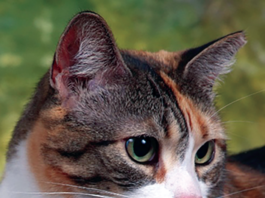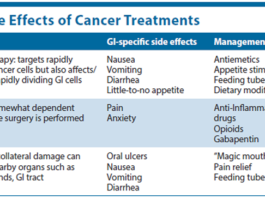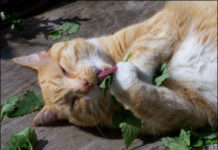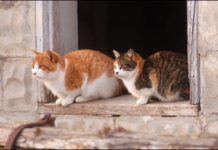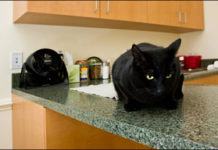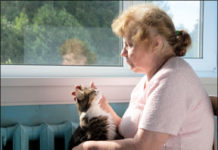Wanderlust of the Outdoor Cat
Recently, a woman asked for advice in a chat room for pet enthusiasts. She explained that her outdoor cat would go off for days, sometimes a week at a time. Naturally, she would worry about him. Then, just as mysteriously as he had left, he would show up again at her door and make himself at home as he always did. One day during one of her cats absences, the woman went to visit a neighbor down the street. As the neighbor asked her in for a cup of coffee, the woman shouted, "Theres my cat!" Indeed, there was her cat lounging on her neighbors couch.
The Costs of Pet Ownership
People sometimes adopt animals without thinking about the commitment, not only in time and effort, but also in costs. Obviously, this is compounded based on the number of pets in the household. To help prospective adopters get a handle on the financial resources needed to care for a pet, the American Society for the Prevention of Cruelty to Animals created a chart for adopters to visualize the breakdown of costs for several types of animals, including cats.
Sorting Out Elimination Disorders
Many serious feline conditions - some of them even life-threatening - commonly display themselves in the excessive passage of watery feces (diarrhea); the painful retention of dry, hardened feces (constipation); the frequent voiding of abnormally large amounts of urine (polyuria); or difficult, perhaps even impossible, urination (dysuria).
Short Takes: July 2010
This study ("The influence of olfactory stimulation on the behaviour of cats housed in a rescue shelter" in Applied Animal Behavior Science, 2010) examined the impact of environmental enrichment in an animal shelter when "novel smells" (odors other than those normally encountered in the shelter environment) were introduced in the cats enclosure. The odor exposure was presented as odorless cloth, or cloths permeated with the odor of rabbit, catnip or lavender.
FIP: What You Need to Know
Among the various illnesses that can bring an end to your cats life, none is more lethal than feline infectious peritonitis (FIP), which primarily affects young cats (less than two years of age) and cats that are 10 years of age and older. While the name of the disease suggests an inflammation solely involving the peritoneum - the membrane that lines the feline abdominal cavity and covers the organs that lie within it - the condition can ravage an affected animals entire system.
Your Cats Keen Sense of Smell
When it comes to nosing around, a cat has a major advantage over its human caregiver. The adorable feline that occupies your house has a whopping 60-to-80 million olfactory cells compared to a humans five-to-20 million cells. Because of their well-equipped noses, cats may use their sense of smell as the primary way of interacting with their environment. "They have a large olfactory area in the nose and do a lot of sniffing," says Katherine A. Houpt, VMD, PhD, the emeritus James Law Professor of Animal Behavior at Cornells College of Veterinary Medicine.
Convert the Outdoor Cat to Indoor Pet
At the riding stable where your teenage daughter takes lessons, a young barn cat had a litter of playful, adorable kittens. A few months after the kittens were adopted, however, the mother cat remained - and as the cool Autumn weather settled in, you worried about her welfare. The barn owner made it clear that he didnt care if she hung around or not - she wasnt much of a mouser - so you decided to scoop her up, put her in the backseat of your car and take her home. The above fantasy exists in the life of every cat lover, but the reality is that when bringing home an outdoor cat (such as a neighborhood stray or a barn cat), you need to take precautions for everyones health and safety. Luckily, if a new owner anticipates the adoption and potential problems - and addresses them accordingly - they can be greatly minimized.
Understand Feline Lymphatic Disease
The feline lymphatic system influences every aspect of a cats physical health According to Margaret McEntee, DVM, a professor of oncology at Cornell Universitys College of Veterinary Medicine, owners should be able to recognize the signs that could indicate feline lymphoma, a potentially deadly cancer of the lymphatic system that can affect many areas of a cats body, including its liver, gastrointestinal system spleen and skin. Lymphoma is the most frequently observed of all feline cancers, explains Dr. McEntee - even more common than mammary cancer. At the Cornell University Hospital for Animals (CUHA), she notes, "We see about 40 cats or so each year that have this disease, and the incidence may be even higher than that at other veterinary clinics."
Feline First Aid: What To Do
All cats are prone to serious injury or the sudden onset of life-threatening clinical signs of deeply rooted and perhaps previously unrecognized illness. And the actions that an owner takes immediately after a cat has had an accident or is in obvious physical distress might save its life. Responsible cat owners should have a basic understanding of how to respond in case an emergency arises. But more important, says Richard Goldstein, DVM, associate professor of clinical sciences at Cornell Universitys College of Veterinary Medicine, is that owners know what not to do in such a situation, since inappropriate treatment can make a bad situation worse and can conceivably kill, rather than help, an ill or injured cat.
Home Care for the Sick Cat
When we share our lives with an animal companion, we hope that our pet will live a long, healthy and happy life. When illness strikes - especially one of a chronic nature - the devoted pet owner faces a daunting challenge. Obviously, medical care will be necessary, which can be expensive and complicated. For some, however, the more difficult aspect is the emotional component. While modern-day cats are certainly receiving better veterinary care and improved nutrition, theyre also living longer. Of course, this is a blessing for cat lovers - but age also brings with it the greater likelihood of chronic disease and illness.
What To Do About Cat Fights
While fighting among cats is not typical behavior, it certainly does happen in the multicat household. Read on to learn some reasons why cats pick fights with each other - and what you can do about it. All kittens play, practicing to defend themselves by arching their backs, jumping on each other, chasing each other and maybe exchanging a few nips on the ears. "The difference between playing and fighting," says Katherine A. Houpt, VMD, emeritus professor of animal behavior at Cornell Universitys College of Veterinary Medicine, "is that when playing, cats take turns chasing each other. There isnt one dominant aggressor or one main victim. Nobody hides."
Dealing With Feline Diabetes
A cats health depends largely on its endocrine system, an array of small organs that manufacture chemicals called hormones and deliver them into the animals bloodstream. Once they reach their respective target destinations, hormones interact with tissues to enable bodily processes and to ensure their effectiveness. Among the components of the endocrine system is the pancreas, and perhaps the most important function of the pancreas is the manufacture of a hormone called insulin.



